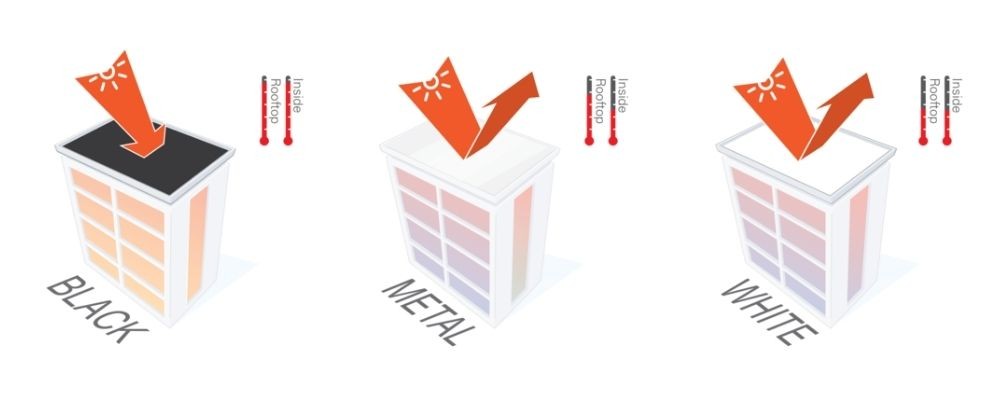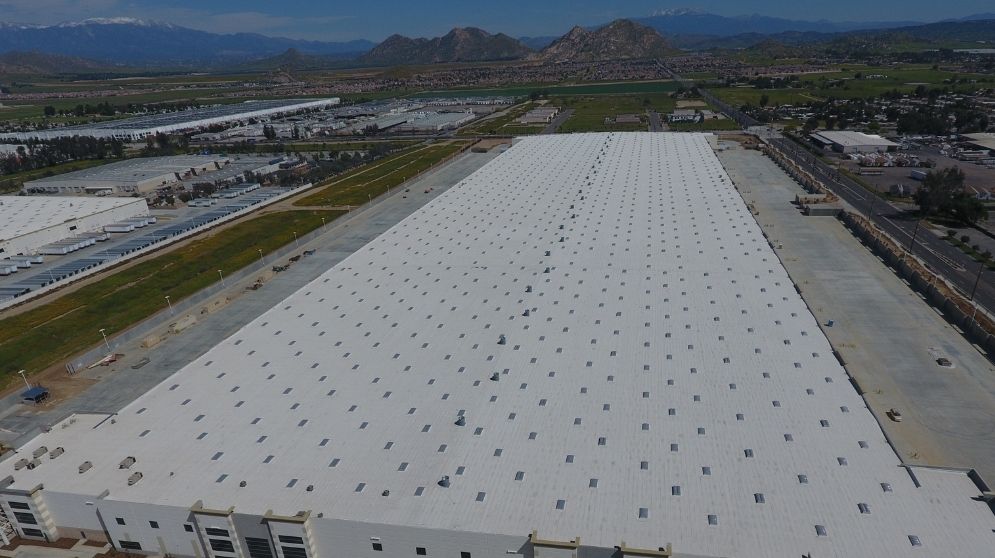As property owners and government regulators continue to focus on ways to make buildings more energy efficient and lower maintenance, the conversations about cool roofs continue to heat up.
A cool roof is a water-protective barrier that not only keeps moisture out, but also reflects more sunlight while absorbing less heat than traditional roofing systems. That, in turn, keeps the rooftop and overall building temperatures — and the costs associated with managing them both — relatively low enough to make an impact in a property owner’s pocketbook.
Though official requirements for what constitutes a cool roof can vary by region and specific municipal codes, they are generally based on solar reflectance and thermal emittance values that together form the solar reflectance index (SRI).

Most building professionals and municipalities that recognize the benefits of cool roofing and other sustainable roofing technologies measure that SRI with certain standards adopted over time, including the ENERGY STAR program.
If you’ve ever browsed the home appliance aisles at the store or shopped for a refrigerator, dishwasher or even desktop computer online, you’ve probably noticed the blue-and-white sign with the ENERGY STAR logo on it, or seen it mentioned in product reviews. Though highly visible and recognizable by consumers, there are those that believe the designation has run its course after nearly three decades, and they are calling for the U.S. Environmental Protection Agency to end it.
Despite some backlash, there are many reasons not to panic about ENERGY STAR’s impending sunset.
Looking back at the previous blog entry in this series from October 2018, there are several existing standards by which energy-efficient designs can be considered cool roofs. Among the most recognizable is the ASHRAE Standard 90.1, which provides minimum energy-efficiency requirements for all structures except low-rise residential. The codes are updated frequently to reflect innovations in technology, including the most recent update in 2016 that specifically addressed roof solar reflectance and thermal emittance requirements for low slope roof systems.
Another example is the International Energy Conservation Code (IECC), which since 2000 has become a model for energy efficiency in new construction adopted by many states. Though different than ASHRAE Standard 90.1 and ENERGY STAR, updates implemented by the International Code Council earlier this year are consistent with other codes and now consider roof reflectivity and insulation among the factors to define a cool roof.
So even without the specific ENERGY STAR designation, roofing contractors and their customers still have several recommendations, guidelines and requirements to follow in order to become more energy efficient and cost conscious on their projects. When it comes to commercial roofs, the ENERGY STAR designation has arguably been surpassed by the other measurable codes that still factor in long-term energy efficiency and can extend the roof surface’s lifespan while also reducing maintenance costs. Over the past decade, highly-reflective rooftops became part of the design conversation for architects and roofing contractors, and many municipalities adopted standards like ASHRAE 90.1 and IECC, making requirements on commercial buildings stricter than ENERGY STAR allows.
Check back with the JM Commercial Roofing Blog next month for the next installment in this Cool Roof Series, which will go into further detail about when and how to decide if a cool roof is the best solution for a specific roofing issue based on several factors ranging from regional weather and climate patterns to municipal codes and standards.
For additional information, please contact:
Heidi Wollert, SBS, APP and BUR Product Manager
Email: heidi.wollert@jm.com
Phone: +1-303-978-5142

